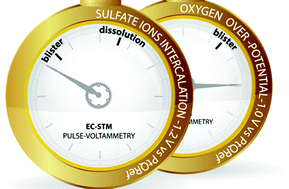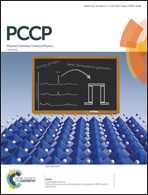Temporal analysis of blister evolution during anion intercalation in graphite†
Abstract
In the currently accepted picture, when graphite is immersed and polarized in a diluted sulfuric acid electrolyte, the surface undergoes an invasive process due to the intercalation of solvated sulphate anions inside the crystal. The following evolution of CO, CO2 and O2 promotes the surface swelling and the growth of blisters. Here, we give evidence that the appearance of blisters affects the graphite surface as soon as the oxygen potential is reached, i.e. before the traditionally accepted anion intercalation stage, which instead is demonstrated slowing the blister development. These results suggest a new picture of the solvated anion intercalation in graphite with respect to the current interpretative model.



 Please wait while we load your content...
Please wait while we load your content...